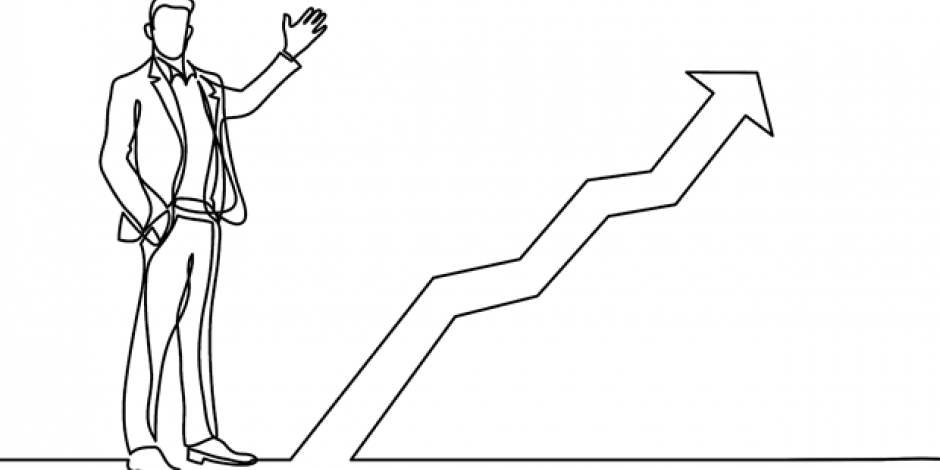As I was saying...
Hello, everyone. Let me start with an apology. To be honest, I haven't really had time to prepare properly for this article about giving presentations. Also, I don't really have enough space here to give you all the advice about English presentations that I probably should. And I'm a bit nervous about so many people reading this. But, anyway, I'll start and see how far I get. Oh, and yes, if you have any questions, then do e-mail me some time...
If you are still reading and not asleep by now, I'm sure you'll agree that wasn't a very inspiring beginning. Unfortunately, such introductions are typical of many presentations.
Many learners who need English at work have to give some sort of presentation at a certain point. Yet, few of us are naturally good speakers in public, even in our own language. One of the main reasons is that we have had no training. However, by observing some simple rules, we can improve our performance dramatically:
-
Prepare your presentation properly.
This is the golden rule. Think about who your audience is, why they have come to hear your presentation and the most important points you want people to take away with them. If you have the chance, visit the room where you will be giving the presentation beforehand. Also check that the equipment works.

-
Structure your presentation clearly.
Write down a summary structure for yourself on one side of a piece of paper. If you cannot do this, you probably have no structure. Tell or show your audience your structure in or after your introduction. A good rule is: "tell them what you are going to tell them, then tell them, and then tell them what you have told them." -
Do not overrun.
You will alienate your audience if you do this. Aim to finish five minutes early and allow enough time for questions. After you have finished preparing your presentation, go through it again and cut out 25 per cent of the content and visuals. -
Take your time.
Do not be afraid to take a short break in the middle of your presentation, for example, by having a drink of water. Ten seconds may seem like a long time to you in this situation, but the audience will not notice — indeed, such breaks can encourage them to focus their attention on you again. -
Get to the point quickly.
I know, for example, that many German-speakers, even in their own language, make the mistake of giving very linear presentations, starting at the beginning of time and going chronologically through every development before getting to the main point. By this time, your audience is asleep, either literally or metaphorically. -
Don't be too serious.
This is another typical fault I have observed in German-speakers. This does not mean that you should be telling jokes all the time. However, an amusing anecdote can be a nice way of starting your presentation. Also, the audience will respond to your body language: if you smile, they are more likely to be on your side. Try it. -
Don't worry about being perfect.
Your audience will normally be impressed simply by the fact that you are giving a presentation in a foreign language. And mistakes often add a certain charm. Indeed, your audience is likely to feel less warm towards you if you deliver your talk in perfect English.

-
Use rhetorical questions.
This is a very simple but effective technique. Why is it simple? Because, as in the case of the last sentence, it gets the attention of the audience. Also vary the length of your sentences for dramatic effect. It works. -
Record your presentations.
And listen to them afterwards. How did you sound? Did you speak too quickly or too slowly. How was your intonation? Does your voice become quiet at the end of your sentences? At a conference, someone once told me that my voice did exactly this, making it sound as though I wasn't convinced about what I was saying. -
Prepare the first question.
If you ask for questions at the end of your presentations, then give people time to think about them. Often it helps to have one prepared in advance that a friend/ colleague/ the chairperson can put to you. Once the first question has been asked, the others usually follow. -
Stay cool.
Answer questions about your presentation in an honest and relaxed manner. Try not to take criticism personally. If you don't know an answer, offer to find out, or ask other people in the audience to help. -
Finish on a high point.
Summarize the main points. Sound confident. Sit down. Well done.
Useful phrases for English presentations
- Good morning, everyone, I'd like to get started.
- The topic of today's presentation is...
- I've divided my presentation into three parts.
- First, I'll talk about... Second... Third...
- If you have any questions, please feel free to interrupt me.
- So, to begin, I'd like to look at... If there are no questions, I'll move on.
- OK, let me come back to the main point.
- Now I would like to move on to look at...
- Finally, let's consider...
- OK, that brings me to the end of my presentation.
- Before I finish, I'd like to summarize the main points of my presentation.
- Thank you very much for your attention.

Ian McMaster is the editor-in-chief of Business Spotlight, a Germany-based language learning magazine for professionals who want to improve their English skills. He used to be the editor-in-chief of Spotlight, the sister magazine for general English.
English small talk: example dialogues and useful phrases
Would you like to learn more about English words and phrases that are often used in presentations? We have prepared short excerpts from a ficitional presentation that show you how you can formulate an introduction or a conclusion, how you talk about graphs in your presentation, how you deal with technical problems... Every example comes with a handy list of English phrases you might need in your next presentation.



